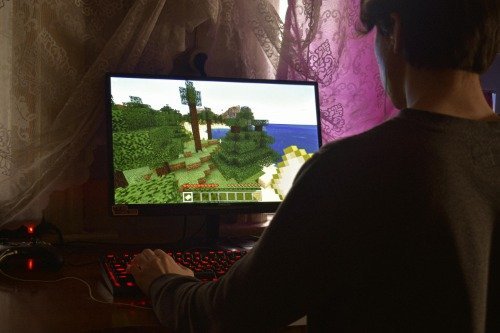As 2025 approaches, the gaming world is buzzing with excitement. With major titles on the horizon, players and developers alike are preparing for what promises to be one of the most exhilarating years for gaming in recent memory. However, while the hype surrounding these upcoming games is palpable, there’s one glaring issue that seems to be flying under the radar: a growing concern over the physical and mental health implications of modern gaming. Whether it’s the impact of hours of screen time on the body, the rise of toxic gaming cultures, or the pressure to keep up with the latest tech, many gamers aren’t taking stock of how these trends could affect them. Let’s dive deeper into the most anticipated games of 2025 and explore this overlooked problem.
The Pressure to Keep Up: Gaming’s Demand for Constant Upgrades

One of the major challenges facing gamers in 2025 is the increasingly expensive and rapid pace of gaming hardware and software development. The gaming community has long been accustomed to the evolution of consoles and PCs, but today’s environment is pushing players to constantly upgrade. With cutting-edge graphics, AI advancements, and immersive virtual reality experiences all on the horizon, there’s an undeniable pressure to keep up with the latest tech. This demand can put gamers in a difficult spot, forcing them to balance their love of gaming with the need to stay financially stable.
In addition to the monetary strain, the desire to upgrade can contribute to stress. With every new game release or hardware upgrade, there’s often a feeling of FOMO (fear of missing out) among gamers who feel they are falling behind. This constant cycle of upgrading takes away from the enjoyment of gaming itself and can cause gamers to feel overwhelmed by the pressure to always be on the cutting edge. The problem here isn’t just the financial toll—it’s the way this pressure can erode the mental and emotional benefits of gaming, turning a hobby into a source of stress.
Further, the constant need for new gear and technology can push gamers to neglect the physical aspects of their well-being. Hours spent glued to a screen without ergonomic furniture or regular breaks can contribute to back pain, eye strain, and poor posture. Even the best gaming setup can’t make up for the toll that sitting for prolonged periods of time takes on the body. As a result, while gamers are investing more in tech, they’re potentially overlooking their own physical health needs.
Health Concerns and the Impact of Prolonged Gaming

It’s no secret that gaming can be addictive, but as games become more immersive and time-consuming, the risks to both physical and mental health continue to grow. As we look toward the games of 2025, many titles are expected to offer even deeper immersion through virtual reality (VR) and augmented reality (AR) experiences. While these technologies provide a more lifelike experience, they also bring new health concerns to the forefront.
One of the most significant problems with VR and AR gaming is the potential for motion sickness. Many gamers experience discomfort when navigating virtual worlds, which can lead to dizziness, nausea, and headaches. As these technologies become more advanced and widely adopted, this issue is likely to become more common. Players who spend long hours in VR environments may also experience eye strain and fatigue, as the eyes must constantly focus on a screen that is often positioned very close to the face.
The issue of sedentary behavior is also growing in importance. Gaming, by its very nature, encourages long periods of inactivity, and many gamers struggle to balance their love of gaming with the need for physical activity. Prolonged gaming sessions can lead to a range of health problems, from obesity to cardiovascular issues. As the popularity of multiplayer online games increases, many players find themselves spending entire weekends or evenings in front of a screen, rarely getting up for breaks or engaging in physical activity.
The mental health impact of gaming is another area that often goes unaddressed. While gaming can be a source of stress relief and a form of social connection, the intense nature of many games can cause anxiety, depression, and burnout. The rise of competitive gaming, especially esports, has created a culture where winning is everything. This pressure to constantly improve can lead to performance anxiety, a lack of self-esteem, and, in extreme cases, mental health disorders. Moreover, online toxicity—where players engage in negative behavior such as trolling, harassment, and cyberbullying—adds another layer of mental strain for gamers.
The Path Forward: Finding Balance Between Gaming and Well-Being
As the gaming industry continues to thrive and evolve, it’s important for players to recognize that their health and well-being are just as important as the games themselves. While the latest graphics, hardware, and innovations in gameplay are exciting, they should never come at the expense of mental and physical health. So, what can gamers do to ensure they are playing responsibly and sustainably?
First, it’s essential to create a balanced gaming schedule. Gaming can be a fantastic way to unwind, but it’s important to take breaks and engage in other activities. Scheduling time for physical exercise, whether it’s a walk, yoga, or a workout at the gym, is vital for preventing the long-term effects of sedentary behavior. Taking regular breaks from screen time can help mitigate eye strain and promote better posture. If you’re using VR or AR technology, it’s important to take frequent breaks to avoid motion sickness and eye fatigue.
Second, gamers should consider investing in ergonomic equipment. Comfortable chairs, adjustable desks, and proper keyboard and mouse setups can go a long way in preventing back pain and other musculoskeletal issues. Posture is key to reducing strain, so setting up a gaming area that promotes good posture will make a huge difference in your comfort levels during long gaming sessions.
Lastly, the gaming community needs to foster a healthier and more supportive environment. Game developers and platform creators must continue to prioritize mental health in their designs, implementing features that reduce toxicity and encourage positive behavior. Gamers, too, should be mindful of how they interact with one another online, promoting kindness and inclusivity rather than hostility.
2025 promises to be a groundbreaking year for gaming, but it’s crucial that gamers take a step back and assess the impact these developments will have on their health. As the demand for new tech increases, it’s essential to keep a focus on physical activity, mental well-being, and overall balance. Only then can the excitement and joy of gaming continue without compromising the long-term health of those who love it most.


